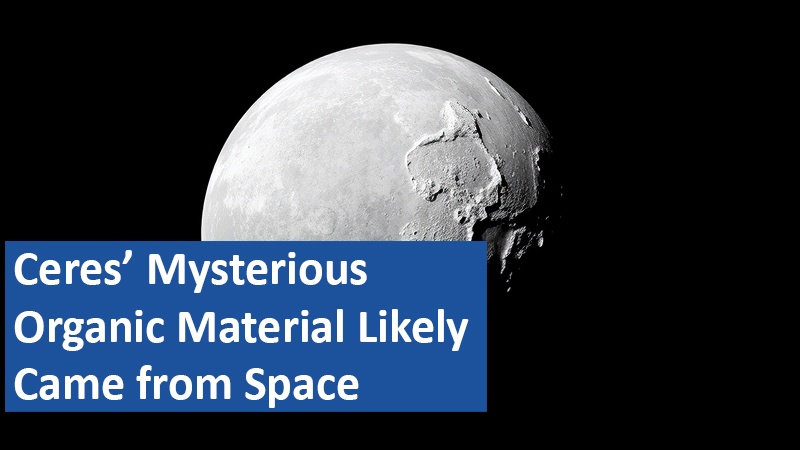
Scientists have long debated the origin of the organic material found on Ceres, the largest object in the asteroid belt. While many believed it emerged from the dwarf planet’s own cryovolcanic activity, new research suggests otherwise. Instead, the hydrocarbons detected on Ceres’ surface likely arrived through asteroid collisions, reshaping our understanding of the planet’s geological history.
Find top-rated products on Amazon today!
Ceres: A Unique World in the Asteroid Belt
With a diameter of about 960 kilometers, Ceres is unlike any other asteroid. It contains an unusual amount of water ice and salts, features that set it apart from the typically dry and rocky bodies in the asteroid belt. Even more intriguingly, Ceres has cryovolcanoes—geological structures that release briny, icy material instead of molten rock. These icy eruptions have led scientists to speculate that organic molecules on the dwarf planet could have originated from its own subsurface processes.
However, data from NASA’s Dawn mission, which studied Ceres in detail from 2015 to 2018, revealed patches of organic material in several impact craters. These discoveries raised a critical question: Did these hydrocarbons emerge from within Ceres, or were they delivered by external forces?
New Analysis Points to an Extraterrestrial Source
A team of researchers led by Ranjan Sarkar and Andreas Nathues from the Max Planck Institute for Solar System Research reanalyzed data from the Dawn spacecraft using artificial intelligence and advanced spectral imaging. Their goal was to identify additional deposits of organic material and better understand their geological context.
Their findings were surprising. The organic molecules were concentrated in only three craters—Ernutet, Inamahari, and Urvara—totaling about 1,000 square kilometers of coverage. Unlike previous assumptions, these organic-rich regions showed no signs of past or present cryovolcanic activity. There were no fractures, vents, or subsurface channels typically associated with geological outflows. More importantly, Ceres’ known cryovolcanoes contained no traces of organic matter.
Asteroid Collisions: The Most Likely Explanation
Given the absence of volcanic or tectonic activity at the discovery sites, the researchers concluded that Ceres did not generate these hydrocarbons itself. Instead, they propose that the organic material was delivered by asteroid impacts.
Asteroids from the outer regions of the asteroid belt are known to contain carbon-rich crusts. If one of these bodies collided with Ceres at a low enough velocity, its organic compounds could have remained largely intact upon impact. This scenario would explain why the majority of the material is clustered around the Ernutet crater, with smaller deposits in other locations likely representing scattered fragments from the same impactor.
What Could Future Missions Uncover?
This discovery shifts the narrative on Ceres’ chemistry and its potential for harboring prebiotic materials. If the organic molecules were delivered by asteroid impacts rather than being produced internally, it raises new questions about how Ceres has interacted with its cosmic environment over time.
Could similar organic material be found on other icy bodies in the solar system? What does this tell us about the possibility of life-forming ingredients traveling across space? Share your thoughts in the comments!
Based on content from www.scinexx.de and own research.